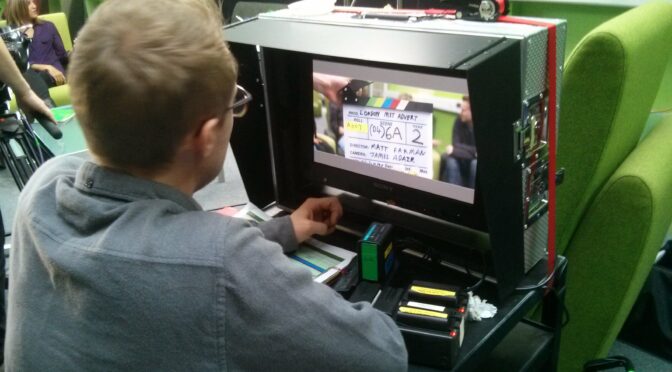If we asked you to name the second largest search engine after Google, you’d probably say it was Bing, followed by asking if Bing is even still a thing. It turns out it’s not Bing, though it’s still a thing. In fact, the second largest search engine is none other than YouTube.
With three billion searches per month, YouTube is an excellent platform to promote your brand, both organically and using paid ads. The Google-owned video platform can be a far more effective source of marketing than many other traditional options.
YouTube is a great place to market your brand, but it requires a strategy, and you can’t simply upload a few videos in the hope of something going viral. Instead, three primary types of content work best on YouTube: Hero, Hub and Help, and in this guide we’re exploring how each one can yield strong results on the UK’s second-largest search engine.
Gaining leverage on YouTube
Having an impact on YouTube requires a deep dive into the types of content already found on the channel. YouTube even breaks down its content into three different categories. These are, of course, Hero, Hub and Help.
Each one serves a different purpose, offering audiences distinct videos that invoke a specific emotion. Before you begin posting on YouTube, it’s handy to understand how each type of content works so you can plan your strategy more effectively.
Different types of content on YouTube
Hero
If you’re looking to go big or go home, then Hero content will appeal to you, as it creates a big splash and drives people to your channel. If it was a personality, Hero content would be an attention-seeker. Think big campaign launches or specific milestones, and you’re not far off what Hero represents.
Hero content is all about creating big waves, but it’s not something you will regularly use on YouTube (more on that in a bit). It’s reserved for when you have that one piece of news you really want to share with the world.
Hub
Creating Hub content means thinking about the value you provide the audience. Its aim is to entertain and keep people engaged, watching your video and wanting to click on the next one. This might include topics on current trends or particular niches related to your industry.
If, for example, you’re a food and beverage brand, Hub content might include a cooking mini-series showing audiences how to make recipes over four or five short videos. The goal is to get people watching all the videos in the series because they’re engaged and want to know how to make the entire recipe.
Help
When it comes to Help content, it’s all about answering the questions people are searching for in your industry on Google or YouTube. When people search a query on Google, it either returns a text result or video, and the more consistent you are with this type of content, the higher your chances of showing up in the search results.
If your video answers the right questions, then it will rank organically on page one. By answering important questions, you can build trust with audiences and drive them onto your channel to create a bigger following for your brand.
How do I choose the right content?
So should you create Hero, Hub or Help content to drive your brand? Ideally, you’ll use all three methods to build a diverse range of videos that excite, insight and educate your audience. However, there are some aspects worth noting.
Hero content, for example, doesn’t work if you try and do it all the time. Therefore, you should keep this for when you have something really important to say, such as a product launch or seasonal storytelling.
You’re left with Hub and Help, which should be regular touchpoints in your content strategy for YouTube. Aim to create a solid mixture of insightful Hub content that keeps people coming back for more and educational Help content to build trust.
How many videos you create depends on capacity and where YouTube marketing ranks in your general marketing strategy. But we recommend consistency, posting at least a couple of Hub and Help content pieces each month.
Making Hero, Hub and Help work for your brand
The “triple H” of content on YouTube can be a major driver for engagement. Once you’ve decided on how much you can create, work out whether it will be executed in-house or if you will partner with third-party companies to bring your strategy to life.
Then create a catalogue of Hub and Help content, building up the number of videos you have and introducing yourself to audiences on YouTube. Once you’ve built up engagement and created a sense of community on your YouTube page, it’s time to go for the Hero content.
When performed correctly, this strategy has the power to turbocharge your brand and give you a significant footing on YouTube. And even though this type of content is favoured with YouTube, you can use it as a blueprint for other content strategies and implement it across the rest of your marketing outreach.
Hero, Hub and Help inspiration
Many brands have nailed their Hero, Hub and Help content on YouTube, including Volvo. The Swedish carmaker has always been a leader in creating content, and its Hero, Hub and Help content has racked up hundreds and millions of views and counting.
Volvo
Hero
The Volvo Hero content has been viewed more than 100 million times and certainly goes big, with one specific video using Jean-Claude Van Damme to tell a story of stability and precision for Volvo’s Dynamic Steering for their trucks.
Hub
If you’re a truck lover, then Volvo’s Hub content on YouTube was made for you. There’s a range of entertaining videos of stunts, innovations and much more truck-related content designed to keep the audience clicking on that “watch next” button.
Help
Volvo’s Help content is designed to teach you how to drive their cars and understand what goes into the makeup of their vehicles. With videos on things like the I-Shift Dual Clutch, the car brand educates the audience, getting them familiar with their new innovations.
Summary
Using Hero, Hub and Help is a great way to understand the dynamics of YouTube and create content that excites your audience. Building a successful triple H strategy can add a new layer to your YouTube channel, increasing engagement and ultimately boosting your bottom line.
George Hughes is a former television Director and the Founder of video marketing agency Small Films. His company helps brands to communicate with a wider audience using strategic video content.
Want a professional hand in creating compelling, authoritative video content as part of your marketing? Get in touch today.




